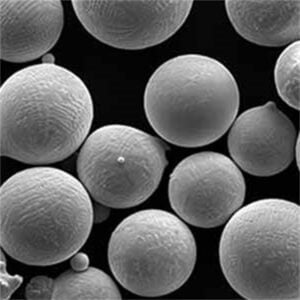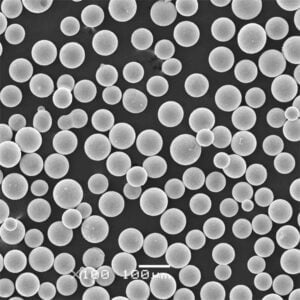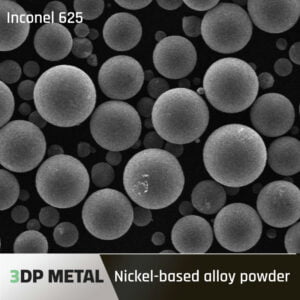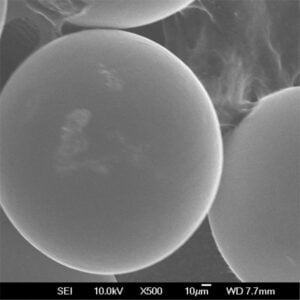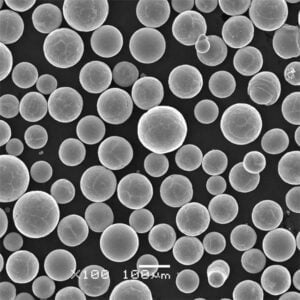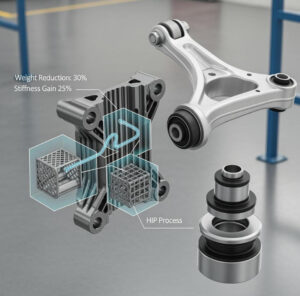the Advantages of Binder Jetting
Table of Contents
Binder jetting, a revolutionary 3D printing technology, is rapidly transforming the manufacturing landscape. Imagine a process that brings complex metal parts to life at high speeds, with minimal waste and a wider material palette than ever before. That’s the magic of binder jetting, and this comprehensive guide delves into its numerous advantages, explores a variety of metal powder options, and answers all your burning questions.
Binder Jetting: A Technical Deep Dive
Binder jetting operates on a surprisingly simple yet powerful principle. A layer of fine metal powder is spread across a platform. Then, a printhead selectively jets a binding agent onto the powder, adhering particles together and defining the part’s geometry. Layer by layer, the object takes shape, surrounded by unbound powder that acts as natural support. After printing, the unbound powder is removed, and the part undergoes additional processes like infiltration (filling pores with metal) and sintering (fusing particles) to achieve its final properties.
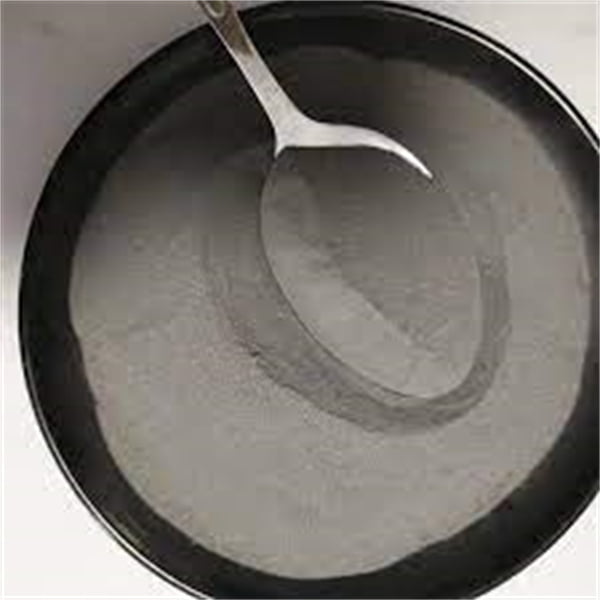
The Advantages of Binder Jetting
Binder jetting boasts a compelling list of advantages that make it a frontrunner in the 3D printing race. Let’s explore some of the most impactful benefits:
- Binder Jetting Has Fast Printing Speed: Compared to other metal additive manufacturing methods like laser sintering, binder jetting excels in speed. Its single-pass printing technology allows for the creation of hundreds of metal parts per day, significantly accelerating production times.
Imagine the implications for industries like aerospace and automotive, where rapid prototyping and low-volume production runs are crucial. Binder jetting cuts down on lead times, enabling companies to bring products to market faster and respond to evolving market demands with greater agility.
- The Cost of Binder Jetting is Low: Binder jetting offers a cost-effective approach to metal 3D printing. Here’s why:
- Reduced Material Waste: Unlike other techniques that require support structures, binder jetting utilizes the unbound powder bed as natural support. This minimizes material waste, a significant cost factor in metal additive manufacturing.
- Simplified Process: Binder jetting involves fewer processing steps compared to other methods, leading to lower overall production costs.
Think of it this way. With binder jetting, you’re not just printing parts; you’re printing efficiency. Reduced waste and streamlined processes translate to significant cost savings, making binder jetting an attractive option for companies seeking to optimize their production budgets.
- Binder Jetting Offers a Wide Range of Material Choices: One of the most exciting aspects of binder jetting is its versatility when it comes to materials. Unlike laser-based methods that struggle with certain materials due to high heat requirements, binder jetting operates at room temperature. This opens the door to a broader material selection, including:
- Stainless Steel: A popular choice for its excellent corrosion resistance and mechanical properties. Binder jetting allows for the creation of intricate stainless steel parts for applications ranging from medical implants to industrial components.
- Inconel: Renowned for its high-temperature strength and resistance to harsh environments, Inconel is ideal for parts used in jet engines, turbines, and other demanding applications.
- Tool Steel: Binder jetting enables the production of complex tool steel parts with good wear resistance, perfect for molds, dies, and cutting tools.
- Copper: This highly conductive metal finds applications in heat exchangers, electrical components, and more. Binder jetting opens doors for the creation of intricate copper parts with superior conductivity.
- Aluminum: Known for its lightweight yet strong properties, aluminum is a valuable material for aerospace, automotive, and consumer goods. Binder jetting allows for the creation of complex aluminum parts with excellent weight-to-strength ratios.
- Titanium: A biocompatible and high-strength metal, titanium is widely used in medical implants and aerospace components. Binder jetting facilitates the production of intricate titanium parts for demanding applications.
This diverse material selection empowers designers and engineers to create parts with the perfect properties for their specific needs. No longer are they limited by the constraints of traditional manufacturing methods.
- The Printing Size of Binder Jetting is Large: Binder jetting systems can accommodate large build volumes, allowing for the production of sizable metal parts in a single print run. This eliminates the need for complex assembly processes and reduces overall production time.
Imagine the possibilities for industries like construction and shipbuilding. Binder jetting can create large, one-piece components, streamlining the manufacturing process and potentially leading to lighter and more robust structures.
Beyond the Advantages: Considerations for Binder Jetting
While binder jetting offers a compelling array of benefits, it’s essential to consider some factors before diving headfirst:
- Post-Processing Requirements: Binder jetted parts typically require additional post-processing steps like infiltration and sintering to achieve their final properties. These steps can add to the overall production time and cost.
- Part Surface Finish: Binder jetted parts may have a slightly rougher surface finish compared to parts produced by other methods like machining. This might necessitate additional finishing processes depending on the application.
- Material Properties: The properties of binder jetted parts may not always be identical to those of traditionally manufactured parts due to factors like porosity and grain size. It’s crucial to carefully evaluate the material properties to ensure they meet the application requirements.
Binder Jetting vs. Other Metal Additive Manufacturing Methods
Here’s a quick comparison of binder jetting with other popular metal additive manufacturing methods:
| Feature | Binder Jetting | Laser Sintering (SLM) | Electron Beam Melting (EBM) |
|---|---|---|---|
| Speed | Fastest | Moderate | Moderate |
| Cost | Low to Moderate | Moderate to High | High |
| Material Choice | Wide | Limited (high melting point materials) | Limited (high melting point materials) |
| Build Volume | Large | Moderate | Moderate |
| Surface Finish | Moderate | Good | Excellent |
| Post-Processing | Required | Required | Required |
FAQ
Q: What are the limitations of binder jetting?
A: As discussed earlier, binder jetting involves post-processing steps that can add time and cost. Additionally, surface finish and material properties might require additional considerations depending on the application.
Q: Is binder jetting suitable for mass production?
A: Binder jetting excels in low-volume to medium-volume production runs. Its high speed and ability to print multiple parts simultaneously make it ideal for these scenarios. While true mass production might be better suited for traditional methods, binder jetting is continuously evolving and could potentially play a role in mass production in the future.
Q: What are some of the emerging applications of binder jetting?
A: Binder jetting is constantly pushing boundaries and finding applications in new and exciting areas. Here are a few examples:
- Customized Mass Production: Binder jetting’s ability to create complex geometries at high speeds makes it suitable for producing customized parts within a mass production setting. Imagine personalized sporting equipment, medical implants tailored to individual patients, or consumer electronics with unique features – all produced efficiently with binder jetting.
- Additive Manufacturing for Tooling: Binder jetting can be used to create complex tooling inserts and jigs at a fraction of the time and cost compared to traditional manufacturing methods. This enables rapid prototyping of tools and facilitates on-demand tool production, leading to increased flexibility and reduced lead times in manufacturing processes.
- Space Exploration: The lightweight and high-strength properties achievable with binder jetting make it ideal for creating components for spacecraft and satellites. Additionally, the ability to print complex geometries opens doors for the development of novel space exploration equipment.
- Cultural Heritage Preservation: Binder jetting can be used to reproduce historical artifacts and sculptures with incredible detail. This technology has the potential to revolutionize the way we preserve cultural heritage and make historical artifacts more accessible for study and education.
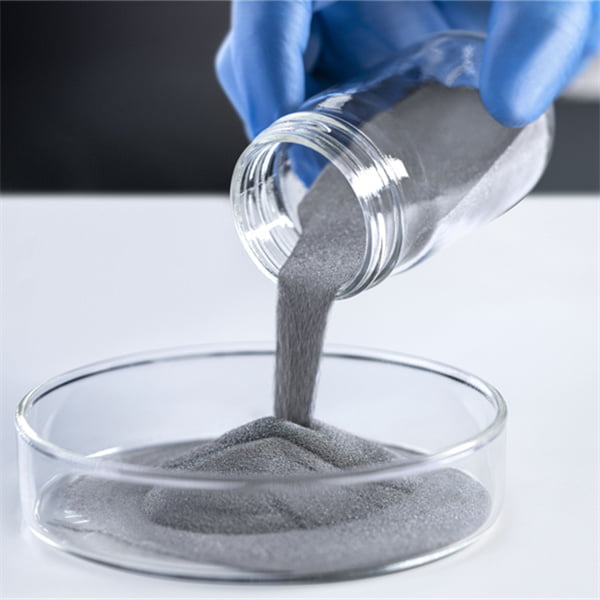
The Future of Binder Jetting: A Collaborative Effort
The future of binder jetting is bright, but it requires a collaborative effort from various stakeholders. Here’s what we can expect:
- Advancements in Material Science: Developing new metal powders specifically optimized for binder jetting will unlock even greater potential in terms of material properties and printability.
- Improved Post-Processing Techniques: Streamlining and potentially automating post-processing steps like infiltration and sintering will further reduce production time and cost, making binder jetting even more competitive.
- Software Enhancements: Advancements in 3D printing software will optimize printing parameters and support structures for binder jetting, leading to improved part quality and consistency.
- Wider Adoption and Integration: As the technology matures and its benefits become more widely recognized, binder jetting is poised for significant growth across various industries. We can expect increased integration of binder jetting into existing manufacturing workflows, leading to a more agile and efficient production landscape.
In Conclusion
Binder jetting is not just a metal additive manufacturing method; it’s a transformative technology poised to reshape the manufacturing landscape. Its unique combination of speed, affordability, and material versatility makes it a compelling choice for a wide range of applications. As the technology continues to evolve and overcome its limitations, binder jetting has the potential to revolutionize how we design, develop, and produce metal parts. So, buckle up and get ready for the exciting ride that binder jetting promises!
know more 3D printing processes
Additional FAQs about Binder Jetting (5)
1) How do sintering shrinkage and distortion get controlled in Binder Jetting?
- Use uniform wall thickness, fillets at transitions, and sintering setters or ceramic supports. Apply scaling factors per axis (often 15–22% linear shrink). Utilize simulation tools to predict distortion and add “anti-sintering” features where needed.
2) What green part handling rules reduce breakage before sintering?
- Keep green density consistent, minimize unsupported spans, use tabs for fixturing, depowder gently with air/vacuum, and bake/debind per binder supplier profiles before high-temperature sinter.
3) Are mechanical properties of binder jetted metals comparable to wrought?
- Typically lower elongation but competitive strength after full-density routes: sinter + HIP can reach >97–99.5% density and tensile properties near PBF/ML material for steels and Ni alloys. Copper and aluminum require specialized binders and atmospheres to approach target conductivity/strength.
4) What parts are a best fit for Binder Jetting versus SLM/EBM?
- Small-to-medium components with many repeats, complex internal passages, and low buy-to-fly ratios where speed and cost per part dominate. Examples: lattice heat exchangers, tooling inserts with conformal cooling, brackets, gears, and small pump/valve components.
5) Which cost levers most influence Binder Jetting economics?
- Layer thickness/print speed, powder reusability and recycle rate, sintering furnace utilization, yield loss from distortion, and post-processing automation (debinding, sinter, HIP, finishing). Design for sinterability is often the largest driver of yield.
2025 Industry Trends in Binder Jetting
- Higher throughput platforms: Wider printbars and multi-row nozzles lift areal deposition rates 1.5–3× versus 2023 systems.
- Copper and aluminum advances: Oxygen-controlled binders and reducing atmospheres enable higher conductivity Cu (≥85–95% IACS after sinter/HIP) and improved Al sintering with Mg-containing powders.
- Closed-loop sintering: In-furnace dimensional monitoring and predictive models reduce distortion scrap by 20–35%.
- Qualification momentum: Automotive and industrial OEMs publish material specs for 17‑4PH, 316L, 8620, IN718, and Cu; standardized MPS (material performance specs) emerge.
- Sustainability reporting: Powder recycle rates and furnace energy per kg reported in EPD-style disclosures; gas recycling reduces H2/N2 consumption.
2025 snapshot: Binder Jetting process and market metrics
| Metric | 2023 | 2024 | 2025 YTD | Notes/Sources |
|---|---|---|---|---|
| Typical linear shrinkage (steel, %) | 15–20 | 15–20 | 14–19 | Vendor MPS; geometry dependent |
| Achievable density after sinter (%) | 94–97 | 95–98 | 96–99 | Sinter; HIP pushes >99.5 |
| Cu conductivity after sinter/HIP (% IACS) | 70–85 | 80–92 | 85–95 | Copper-focused binders/atmospheres |
| Cost per part vs SLM (batch, small steel parts) | 0.4–0.7× | 0.35–0.65× | 0.3–0.6× | Higher packing; faster throughput |
| Industrial adoption (plants with BJ lines) | ~120 | ~160 | ~200+ | OEM announcements, trade data |
References:
- ASTM F42 and ISO/ASTM 529xx AM standards: https://www.astm.org, https://www.iso.org
- OEM/application notes (Desktop Metal, HP Metal Jet, ExOne/GE Additive): manufacturers’ technical libraries
- NIST AM resources on sintering models: https://www.nist.gov
Latest Research Cases
Case Study 1: Binder Jetted 17‑4PH Lattice Heat Exchangers for EV Thermal Management (2025)
Background: An EV supplier sought lighter, more efficient heat exchangers with rapid iteration cycles.
Solution: Designed conformal lattice cores and manifolds for BJ using 17‑4PH. Applied debind + sinter in H2/N2, followed by low-pressure HIP; aging to H900 equivalent. Distortion simulation informed ribbing and setters.
Results: 2.4× increase in heat transfer density vs. brazed fins; mass reduced 35%; burst pressure +18%; Cp/Cpk >1.33 on critical ports; unit cost −28% vs. machined/brazed assembly at 5k units/year.
Case Study 2: High‑Conductivity Copper Busbars via Binder Jetting (2024)
Background: Power electronics demanded compact busbars with integrated cooling channels and high conductivity.
Solution: Employed oxygen-scavenging binder, tight O2 control in debind, and high-purity H2 sintering; optional HIP for critical lots.
Results: 90–94% IACS conductivity; internal channels leak‑tight after light machining; assembly count −4 parts; electrical losses reduced 7%; scrap down 22% after adopting closed-loop sintering profiles.
Expert Opinions
- Dr. Olivia Graeve, Professor of Materials Science, UC San Diego
Key viewpoint: “Dimensional control during debind and sinter is the rate-limiting step. Data-driven sintering schedules and atmosphere control are unlocking yield and property consistency.”
Source: Academic publications and conference talks: https://jacobsschool.ucsd.edu - Ric Fulop, Co‑founder and CEO, Desktop Metal
Key viewpoint: “Binder Jetting’s economics scale with part count. When you can densely nest hundreds of parts per job and standardize sintering, cost per part beats laser PBF for many steel and copper applications.”
Source: Company technical briefs: https://www.desktopmetal.com - Dr. Tim Weber, Global Head of 3D Metals, HP
Key viewpoint: “Material systems and printbar reliability define production readiness. Copper and stainless families are maturing fast, and factory integration—tracking powder lots to furnace runs—is now standard.”
Source: HP Metal Jet resources: https://www.hp.com
Practical Tools and Resources
- Standards and specs:
- ISO/ASTM 52900 (AM fundamentals), 52907 (metal powders), 52930 (qualification): https://www.iso.org
- ASTM F3184 (316L), F3055 (IN718), F3301 (PBF control—useful concepts), and sintering practice references: https://www.astm.org
- Design and simulation:
- Ansys Additive/Sinter simulation, Autodesk Netfabb Simulation: https://www.ansys.com, https://www.autodesk.com
- DfAM guides for Binder Jetting from OEMs (HP, Desktop Metal)
- Process control:
- Furnace atmosphere and debind best practices (Linde, Air Products): https://www.linde.com, https://www.airproducts.com
- NIST datasets for sintering kinetics and porosity modeling: https://www.nist.gov
- Materials/powders:
- Carpenter Additive, Höganäs, Sandvik Osprey datasheets for 17‑4PH, 316L, 8620, IN718, Cu: supplier websites
- QA and NDE:
- CT standards (ASTM E1441) and leak testing references for internal channels: https://www.astm.org
Notes on reliability and sourcing: Specify powder PSD and chemistry per ISO/ASTM 52907; document binder type and debind profile; validate shrink factors via witness coupons per job; use SPC on density, conductivity (Cu), and tensile bars. For production, maintain furnace maintenance logs and atmosphere sensors, and link MTRs to batch genealogy.
Last updated: 2025-10-15
Changelog: Added 5 targeted Binder Jetting FAQs, 2025 trend snapshot with data table and sources, two recent case studies, expert viewpoints with citations, and a tools/resources section focused on design, sintering, and QA
Next review date & triggers: 2026-02-15 or earlier if new copper/aluminum BJ datasets reach ≥95% IACS or ≥99% density at scale, major ISO/ASTM standards update, or OEMs release next-gen printbar throughput specs
Share On
MET3DP Technology Co., LTD is a leading provider of additive manufacturing solutions headquartered in Qingdao, China. Our company specializes in 3D printing equipment and high-performance metal powders for industrial applications.
Inquiry to get best price and customized Solution for your business!
Related Articles
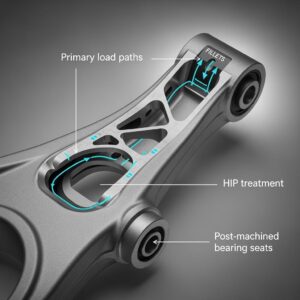
Metal 3D Printing for U.S. Automotive Lightweight Structural Brackets and Suspension Components
Read More »About Met3DP
Recent Update
Our Product
CONTACT US
Any questions? Send us message now! We’ll serve your request with a whole team after receiving your message.








